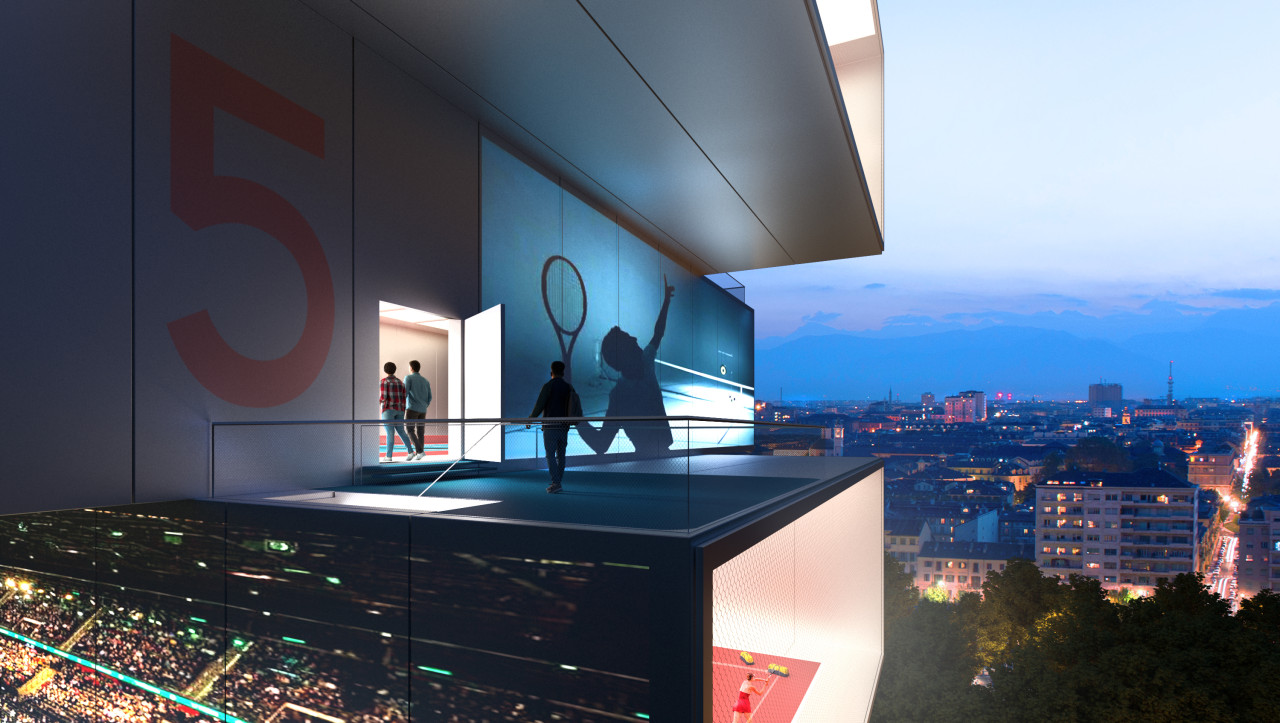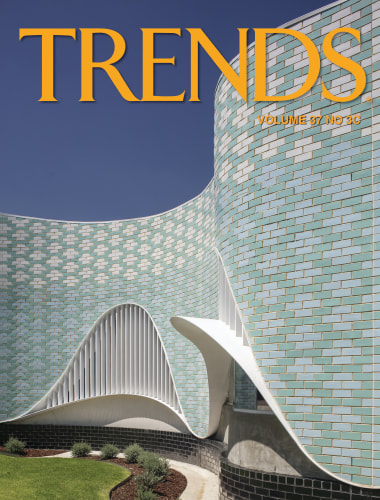Tennis to enjoy new heights
Forget far off, rained-off outer courts, this design by CRA takes tennis convenience next level – a tower comprised of 8 courts stacked one on the next
Designed by CRA (Carlo Ratti Associati) with creative consultancy Italo Rota,
From CRA:
International design and innovation office CRA-Carlo Ratti Associati with Italo Rota has unveiled the design for Playscraper – a tennis tower which features multiple courts stacked on top of one another.
The project was developed for RCS Sport, the sport and media branch of European multimedia publishing group RCS MediaGroup.
CRA worked on the design as part of a larger team of engineers and technical consultants.
The design is made possible by an innovative construction technology based on a lightweight stainless-steel sandwich structure, developed by the company Broad Sustainable Building (BSB).
The 90M high tennis tower consists of eight courts, totalling 5500m² of playing space.
The courts are layered vertically rather than horizontally, using BSB’s B-Core slab structure, a solution inspired by the outer shell of a spacecraft. This technology has made international headlines in the past, as it allowed for the safe deployment of prefabricated construction units in record time.
This project would not just create a new icon for sports lovers, says architect and engineer Carlo Ratti, founder of CRA and director of the MIT Senseable City Lab.
“It also experiments with a new type of public space, extending vertically instead of horizontally.
“The tower is easy to install and dismantle and can be easily moved – this flexible approach fits the circular nature of today’s sports competitions, which move from location to location throughout the year.”
The tennis tower contains eight sandwich structures piled on top of the other, each containing a stand-alone tennis court.
The narrow sides of each ‘box’ feature transparent walls offering panoramic views.
The two long sides incorporate an electronic facade that can stream sports matches and other digital content.
In this way, the tower’s unique design engages not just the players on the court, but those in the surrounding area who can view the action on its wide screens.
The narrow sides of each ‘box’ feature transparent walls offering panoramic views.
The two long sides incorporate an electronic facade that can stream sports matches and other digital content.
In this way, the tower’s unique design engages not just the players on the court, but those in the surrounding area who can view the action on its wide screens.
Credit list
Architectural concept design
Renderings
Project team
CRA design team
Creative consultancy
Construction material
Designed by: CRA (Carlo Ratti Associati)
Story by: Trendsideas
Home kitchen bathroom commercial design




